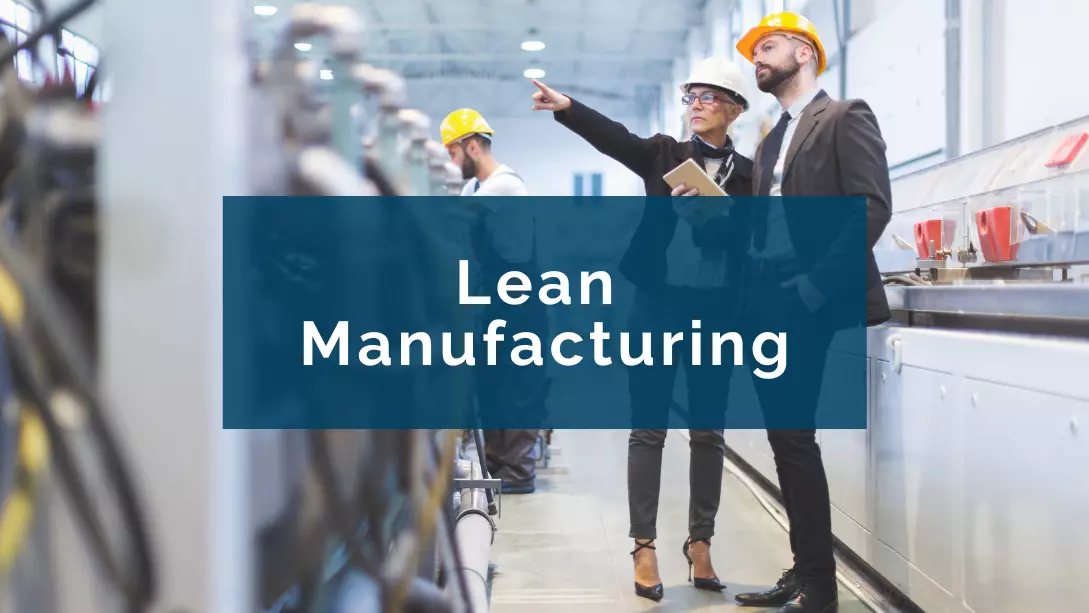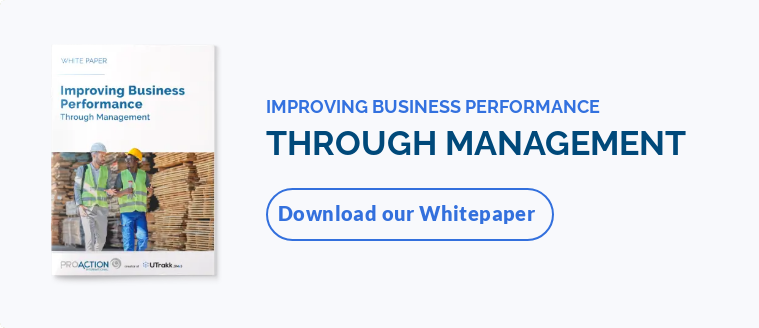What is Lean Manufacturing?
Lean Manufacturing is a production management philosophy focused on creating customer value while eliminating waste. The method originates from the Toyota Production System (TPS), developed by Japanese engineers Taiichi Ohno and Shigeo Shingo after World War II.
TPS was designed to solve Toyota's production problems, including resource shortages and the need to respond quickly to demand fluctuations. It enabled Toyota to become a worldwide leader in the automotive industry, by focusing on reducing waste and continuous improvement.
Benefits of the Lean production system:
- Reduce waste: Identify and eliminate all activities that do not add value to the final product or service.
- Improve quality: Implement robust, reliable processes to reduce defects and improve customer satisfaction.
- Increase efficiency: Optimize workflows and resources to produce more with less.
- Reduce costs: Reduce unnecessary expenditure by streamlining processes, and identifying and eliminating waste.
- Increase flexibility: Provide the ability to respond rapidly to changes in demand and market conditions.
- Foster continuous improvement: Encourage a culture of innovation and perpetual improvement across the organization.
Lean Manufacturing principles
5 Key Lean principles

1. Identify value
The improvement process starts with understanding what the customer really wants.
Value, in this context, represents the aspects of a product or service that meet the customer's needs and expectations and for which he is willing to pay.
By clearly identifying this value, the company can ensure that all its activities and resources are aligned to create what is important to the customer and focus efforts on those elements that really add value.
2. Map the value stream
Value Stream Mapping (VSM) involves analyzing and visualizing all the processes involved in producing a product or delivering a service. It enables us to identify and eliminate waste and non-value-adding activities.
3. Create a flow
This involves reorganizing the production process so that products or services move continuously and smoothly through each stage without unnecessary interruptions or delays. This minimizes waiting times and inventories.
4. Pull the flow
The pull principle involves producing only what is needed, when needed, in response to customer demand. Instead of mass-producing and stockpiling, a pull system ensures that each production stage only starts once the previous one has been completed and the need is confirmed.
5. Strive for continuous improvement
Continuous improvement is a fundamental principle of Lean Manufacturing. It involves engaging all employees in a constant process of seeking and implementing improvements.
This may include small daily adjustments or larger projects, but the aim is always to continuously and progressively improve processes, quality, and customer satisfaction.
7 Types of waste

1. Unnecessary transportation
Is there unnecessary transport in your supply chain process and plant causing delays?
Example: Material or products are transported from one section to another with no added value. Reducing these moves optimizes efficiency and cuts costs.
2. Movements and gestures
Do your employees make unnecessary movements that could endanger their safety
Example: Some workers have to bend over or extend their arms to reach tools or parts, which can cause fatigue and injury. Simplifying movements by reorganizing the workspace can increase productivity and improve safety.
3. Waiting times
Do poor planning, inefficient processes, or unclear work instructions lead to long waiting times in the progress of your production cycle?
Example: Machine breakdowns or delivery delays stop the work of employees and equipment. Minimizing waiting times helps optimize resource use and maintain a continuous production flow.
4. Overproduction
Do you have too many finished products at the end of your manufacturing process?
Example: Your company produces more than is needed to meet customer demand, resulting in additional storage costs and the risk of obsolete products. Adjusting production to match actual demand helps reduce surpluses and overuse of resources.
5. Excess inventory
Do you have unnecessary or excessive stocks?
Example: Too many materials, parts, or finished products are stored in relation to immediate needs, tying up financial resources and space. Effective inventory management helps maintain optimal supply levels and reduce costs.
6. Unnecessary operations
Does your workforce perform unnecessary manufacturing steps that result in wasted time and additional costs?
Example: Some employees execute redundant tasks or processes that do not add value to the final product. Simplifying and standardizing manufacturing processes can eliminate these unnecessary operations.
7. Defects and errors
What are your success and defect rates?
Example: Producing defective parts or products requires rework or scrapping, which increases production costs and affects customer satisfaction. Improving quality from the start reduces defect rates and associated costs.
Lean Manufacturing techniques and tools
To implement Lean principles and reap the benefits, there are various Lean Manufacturing tools and techniques each used for a specific purpose. These tools and techniques can help boost operational efficiency and competitiveness.
- 5S (Sort, Set in order, Shine, Standardize, Sustain): A 5-step method for organizing the workspace to improve efficiency and safety.
- Kanban: A visual system for managing tasks and stocks to maintain a continuous flow of production and avoid overloads.
- Kaizen: A continuous improvement principle where employees at all levels are encouraged to suggest improvements on a daily basis to optimize processes.
- Value Stream Mapping: A visual technique representing in detail all steps of a manufacturing process to identify and reduce waste
- Daily production meetings: Brief team meetings to assess progress, resolve immediate problems, and synchronize team efforts.
- Leader Standard Work: Detailed documentation of best practices and procedures, providing a clear picture of management activities within operations.
- Catchball: An iterative process of discussion and idea-sharing between team members, fostering a dynamic, collaborative exchange to develop solutions and make collective decisions.
- Hoshin Kanri: A strategic planning method that aligns corporate objectives with concrete actions for consistently and effectively implementing improvement initiatives.
- SIPOC diagrams (Supplier, Input, Process, Output, Customer): Overview of the key steps of a manufacturing process describing the relationships between suppliers, inputs, processes, outputs, and customers.
- Poka-Yoke: Error prevention and checking mechanisms to ensure quality and avoid defects from the outset.
- Fishbone diagrams (Ishikawa diagrams): Visual tools to help analyze the root causes of problems by identifying the factors that may contribute to a defect or malfunction.
3 Steps to implement a Lean methodology: Our approach
The process of eliminating waste always stems from a strong interest on the part of the operations manager, vice-president, or director in identifying opportunities for improvement and problem-solving. Who doesn't want to do better?
To succeed in our mission and spot sources of waste, we first need to know what we're looking for. Then, we have to learn to see what we're looking for from a distance, but also up close. To find out how, let's take a closer look at each step of our approach.
1. Workshop on waste in Lean Manufacturing
The first phase is a workshop involving frontline managers (team leaders and supervisors). Throughout this activity, we go over the different types of waste (Muda) in Lean Manufacturing. We encourage conversation and participation by seeking examples from the participants.
This is followed by a fun exercise in which, as a team, everyone must identify the source of waste in photos and/or videos taken in their workplace.
People love this game. The competitive spirit and participation is usually pretty high. Participants excel in this exercise: the glasses are working.
2. Practical application in the production environment
Once the theory is mastered, I visit each manager's workplace and let them identify the waste in their “own backyard”.
This is where it often gets complicated. The manager who had 20/20 vision during the workshop (step 1) is now experiencing a sudden drop in visual acuity. They no longer recognize waste in their environment.
Example: An employee is waiting for instructions before starting a task. It’s obvious that the employee is waiting, but the manager doesn’t see it.
During the workshop, all participants easily recognized this type of waste. But when I’m inquiring about the waste or pointing it out, their answer is not always so clear.
3. Adjustments for long-term correction
To help managers detect sources of waste in their own environment, I work one-on-one with each of them to help them see with a sharper focus.
This is where the real work begins. I follow the manager in their work environment. I let them try to see the waste and I correct them in real time. Then, we repeat the exercise. They must get used to wearing their new glasses. Their vision must be sharpened to "see" the waste. This way, they can always be in problem-solving mode and work towards continuous improvement.
Support and sustain Lean Manufacturing with UTrakk
Our UTrakk software offers powerful features that facilitate the implementation, continuous improvement, and sustainability of Lean principles within organizations. Let's take a look at how this solution supports Lean Manufacturing on a daily basis:
Immediate response to problems
Features such as manufacturing dashboards and digital audit and Gemba Walk checklists enable real-time detection of variances or inefficiencies in production processes. Corrective actions can be created directly from a dashboard or floor tour to respond rapidly to problems.
This reactivity minimizes downtime, contributes to smooth Lean operations, and ensures performance goals are met.
Rapid problem resolution
Our UTrakk DMS supports problem-solving methods such as the PDCA cycle (Plan-Do-Check-Act) and root cause analysis (5 Whys), to systematically eliminate problems and prevent them from happening again.
The solution also lets you schedule daily SIM meetings and committees, facilitating root cause analysis, identification of priorities, and follow-up of corrective actions, while fostering collaboration and teamwork.
Standardized processes
UTrakk comes with a Knowledge Center that helps document and share standardized work instructions, processes, and procedures, minimizing confusion (and waste of time) and ensuring all employees comply with set standards.
Continuous improvement (Kaizen)
The DMS solution encourages a culture of continuous improvement, providing a structured platform for regular assessments and discussions on performance, problems, and opportunities for improvement.
In specific committees, teams can review data, identify waste, and implement small, incremental changes leading to global improvements within the organization.
Performance tracking
As a visual management tool, UTrakk dashboards feature simple diagrams and standardized colors that enable managers to visualize at a glance the status of Lean performance indicators.
This functionality helps track performance in real time, so you can quickly rectify variances and inefficiencies, and adjust processes and corrective measures for continuous, sustainable improvement.
Transformed vision and management
Integrating Lean Manufacturing into your business is like wearing a pair of glasses for the first time. It's uncomfortable at first, but once you're used to them, you can’t live without them.
With proper support and the right tools, the Lean Manufacturing and operational excellence journey can transform your organization, making it more agile, efficient, and resilient in the face of market challenges.
To help managers, I also suggest another winning element: UTrakk DMS, a solution that simplifies the implementation of Lean practices and ensures sustainability on a daily basis, with features like Gemba Walks, actions and opportunities, checklists and more.
Even if implementing Lean Manufacturing often requires initial adjustments, whether in your supply chain processes or management routines, the long-term benefits are well worth the effort.










